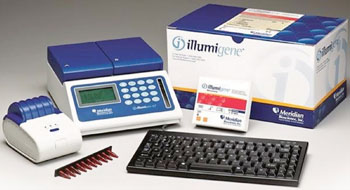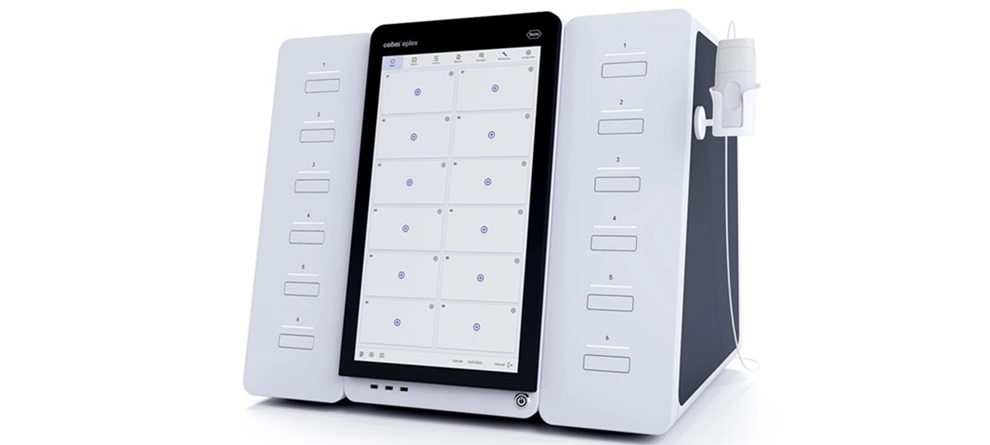Toxigenic Clostridium Difficile Molecular Assay Evaluated
By LabMedica International staff writers
Posted on 17 Nov 2014
Clostridium difficile is an intestinal anaerobic bacterium and the most common pathogenic cause of healthcare-associated diarrhea and consequently, rapid detection of toxigenic C. difficile is very important in clinical laboratories.Posted on 17 Nov 2014
The accepted standard method for detection of C. difficile is the anaerobic culture followed by identification of toxigenicity by enzyme immunoassay (EIA), cell culture cytotoxin neutralization test, or DNA amplification assay. However, there are limitations associated with the toxigenic culture method such as a long turnaround time and the technical complexity.

Image: The illumigene assay kit for detecting toxigenic Clostridium difficile (Photo courtesy of Meridian Bioscience Inc.).
Microbiologists at the Sungkyunkwan University School of Medicine (Seoul, Republic of Korea) examined a total of 302 consecutive diarrheal stool samples for C. difficile infection (CDI). All stool samples without any pretreatment were inoculated on a chromogenic ChromID C. difficile agar plate (bioMérieux SA; Marcy l'Etoile, France) and incubated anaerobically. In-house polymerase chain reactions (PCR) were performed to detect the C. difficile toxin genes.
The scientists evaluate the diagnostic performance of the illumigene assay (Meridian Bioscience, Inc.; Cincinnati, OH, USA) and compared it to a toxin enzyme immunoassay, VIDAS C. difficile A&B (VIDAS-CDAB), bioMérieux’s enzyme-linked fluorescent immunoassay. The illumigene C. difficile DNA amplification assay employs loop-mediated isothermal amplification (LAMP) to detect the toxin A gene (tcdA) within the pathogenic locus (PaLoc).
The sensitivity, specificity, positive predictive value, and negative predictive value of the illumigene assay were 88.1%, 96.7%, 86.7%, and 97.1%, respectively, while those of the VIDAS-CDAB assay were 40.4%, 98.8%, 87.5%, and 88.5%, respectively. A combination of the illumigene and VIDAS-CDAB assays did not improve any of the four evaluated parameters. The illumigene assay showed limits of detection of 250 and 11,467 colony forming units (CFU)/mL for two reference strains. There was no cross-reactivity with eight frequently isolated bacterial species.
The authors concluded that in a prospective, clinical setting, the illumigene assay produced results concordant with previously reported data. The illumigene assay should be a useful method for rapid detection of toxigenic C. difficile in clinical laboratories, and the VIDAS-CDAB assay seems redundant if the illumigene assay is used. The study was published in the November 2014 issue of the journal Diagnostic Microbiology and Infectious Disease.
Related Links:
Sungkyunkwan University School of Medicine
bioMérieux SA
Meridian Bioscience Inc.













